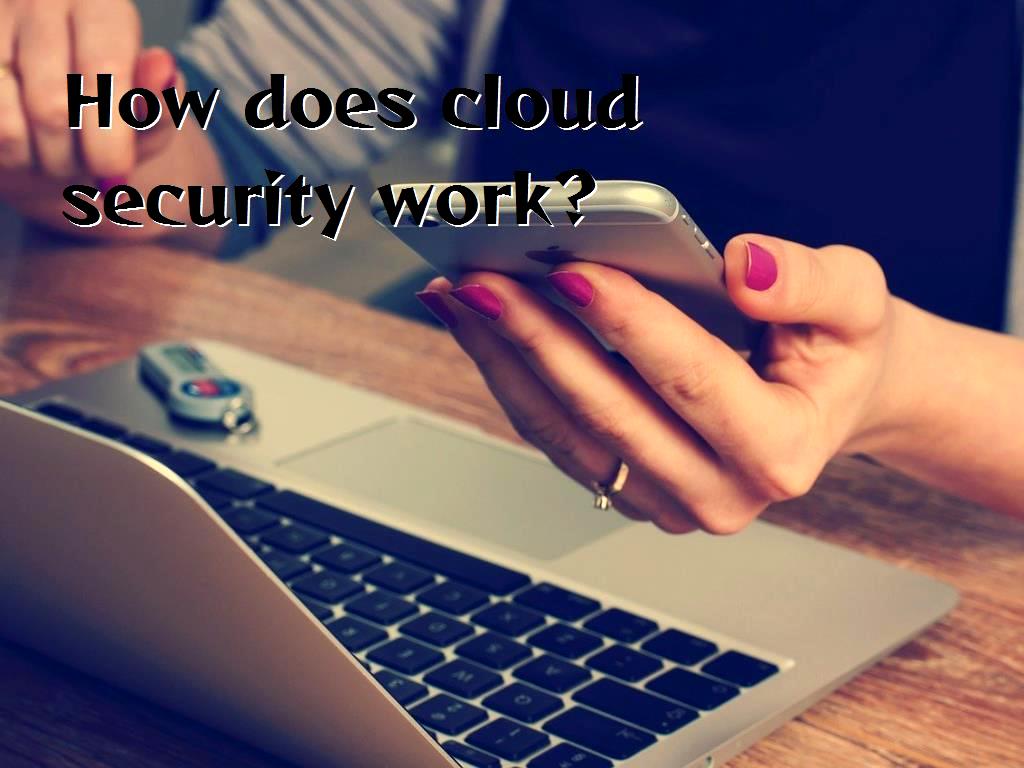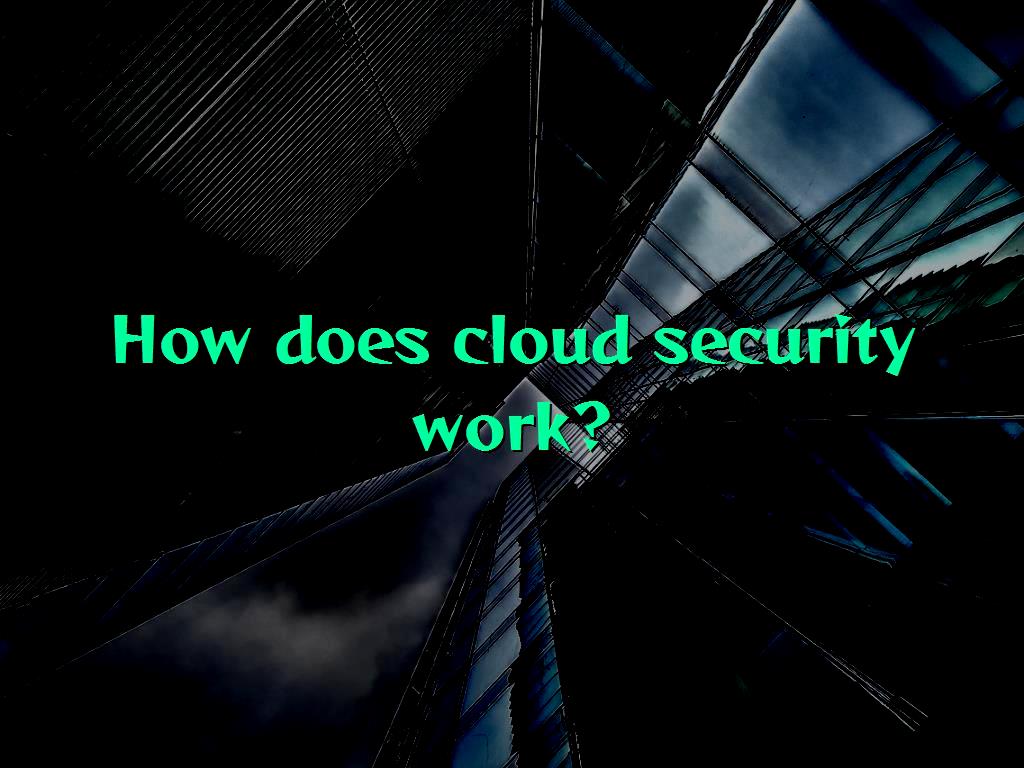How does cloud security work?
|
|
7 minute(s) read
|
Published on: Feb 01, 2022
Updated on: Feb 01, 2022
|
You may have heard about cloud security, but we will review its definition to become more familiar with it. Then you will see the way that cloud security works and what its functions are. In addition, you will know some recommendations about cloud security's uses.

What is cloud security?
It is a set of strategies and methods to protect data and applications hosted in the cloud. Like cybersecurity, security is a broad field and can never be prevented from being attacked. However, a well-designed security strategy dramatically reduces the risk of cyberattacks. Even with these risks, it is often more secure than internal computing. Most providers have more resources for data security than personal businesses, allowing them to keep their infrastructure up to date and fix vulnerabilities as quickly as possible. On the other hand, a company may not have enough resources to perform tasks consistently.
What is its infrastructure of it?
Simple and basic cloud infrastructure refers to resources provided to users through software. The main advantage of using cloud services is to perform large-scale tasks and calculations by solving security problems. In this case, users and business managers will only grow their business without having security concerns to store and maintain the data.
By this definition, any use of cloud space requires services and software provided by the cloud space provider. Securing this software and the data stored in them is the primary concern in the service. This security includes preventing unauthorized access, exporting, or deleting unauthorized data. In this model, the data is stored on cloud data centers, several backups are taken from them, and the error rate in data loss is significantly reduced. Combining these and related risks creates a form of security on users' services.
How it works to avoid any of these dangers
- Corruption, alteration, and loss of data
The structure of these servers is such that there are always multiple backups of the same data on different servers. All existing copies of this data are updated as the information is updated. This data can be of various types, including files, databases, etc.
- Manage unauthorized access
If you use this, all accesses will be checked by this security. Security layers for access control, including Firewall, IPS, IDS, and check all items for user access. Thus, identifying authorized and unauthorized users by defining mechanisms such as 2FA, challenge pages, and blocking access of unauthorized individuals and applications.
- Traffic management
In many cases, the high volume of users' requests and the high consumption of hardware and software resources cause the service to become unavailable or reduce the speed of website service. Using this service in this mode manages resources and requests, detects DDoS attacks and their prevention operations, and assists all its users.
- DMZ As A Service
Firewall, Sandbox, Advanced Threat Protection, URL Filters, SSL Inspection are examples of services that can all be provided to users over the cloud in an integrated package. The integration of these services increases the end user's speed and improves the user's experience.
Components of it
Data security identification and Access Management (IAM)Management and control (policies to prevent, identify and reduce threats)Data Maintenance (DR) and Business Continuity (BC) PlanningLegal requirements
Cloud computing security methods may look like old IT security. But this framework requires different approaches.
What does it protect you against?
Cloud computing security is designed to protect the following, regardless of your responsibility in your position:
Physical networks: routers, electricity, cabling, etc.Data storage: complex drives data servers: leading network hardware and software computing computer virtualization frameworks: virtual machine software, host machine, and guest machine operating system (OS): the software that hosts manage Application Programming Interface (API)Runtime environments: Run and maintain a running programmatic: All information is stored, modified and accessible.Applications: Traditional software services (email, tax software, productivity suite, etc.)End-user hardware: computers, mobile devices, Internet of Things (IoT) devices, etc.
With cloud computing security, ownership of these components can be very different. Of course, this can obscure the customer's security responsibilities since cloud security is based on the authority of each element. It is essential to understand how these items are usually categorized. To put it more clearly, the members of cloud computing are secure in two ways:
1- The core of all third parties of this service
Third-party providers provide various cloud services as modules used to create the cloud. Depending on the type of service, you may manage different amounts of components in the service: The core of any third-party cloud service includes physical network providers, data storage, data servers, and computer virtualization frameworks. The service is stored on the provider's servers and is virtualized through their internal network to be provided to customers and accessed remotely. This reduces the cost of hardware and other infrastructure so that customers can access their computing needs from anywhere via an Internet connection.
2- Cloud computing services-based delivery
There are three main types of delivery, which are:
IaaS (Infrastructure as a Service) PaaS (Platform as a Service) SaaS ( Service as a Software )
Although most of these services are considered the three main layers of general assistance, their application is not necessarily interdependent.

7 Security Challenges of these services
Because the public cloud has no definite boundaries, it also poses completely different security challenges. This is more challenging by adopting modern cloud approaches such as automated Continuous Integration and Continuous Deployment (CI / CD) methods, distributed server-free architecture, and transient assets such as functions as services and containers.
Some of the security challenges of cloud environments and multiple layers of risks that cloud-based organizations face today are:
1- Increased Attack Surface
Public cloud space has become a vast and attractive attack level for hackers who use vulnerable cloud exploits to access cloud data. Malware, Zero-Day, Takeover Accounts, and many other malicious threats have become issues.
2- Lack of Visibility and Tracking
In the IaaS model, these providers have complete control over the infrastructure layer and do not expose it to their customers. Lack of visibility and control is further spread in the PaaS and SaaS cloud models. Cloud customers can often identify their cloud assets or visualize their cloud environment effectively.
3- Workloads are constantly changing
Cloud assets are dynamically generated. Traditional security tools cannot easily enforce protection policies in such a flexible and dynamic environment with Workloads not always get changing and fleeting.
4- DevOps, DevSecOps, and automation
Organizations that have embraced the fully automated DevOps CI / CD culture should ensure that appropriate security controls are identified and embedded in code and patterns. Security-related changes that take place after the use of workload in production can weaken the organization's security situation and prolong the supply time to the market.
5- Access level and critical management
Cloud computing services user roles are usually configured freely and are awarded broad privileges beyond what is intended or required. A typical example is to delete or write a database to untrained users or users who do not need to delete or add database assets. At the application level, keys and privileges with improper settings expose sessions to security risks.
6- Complex environments
Security management in a consistent way in hybrid, multi-cloud environments, which companies favor these days, requires methods and tools that work seamlessly between public providers, private cloud providers, and default deployments, including branch office protection for geographically distributed organizations.
7- Compatibility and management of this service
All well-known service providers have synchronized with most reputable applications such as PCI 3.2, NIST 800-53, HIPAA, and GDPR. However, customers are responsible for ensuring that their workload and data processes are consistent. Due to poor visibility and the dynamics of the cloud environment, the compliance audit process is approaching the mission unless tools are used to achieve continuous compliance review and prompt issuance alerts for incorrect settings.
Click to analyze your wesbite SEO